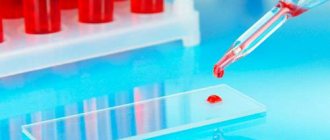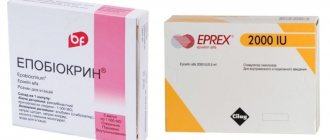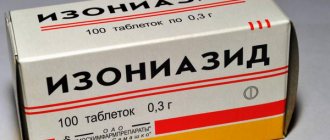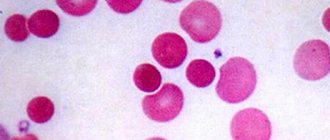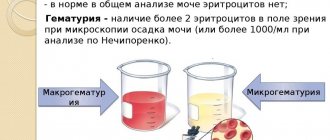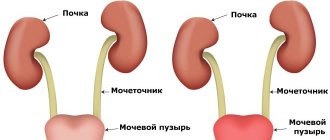What is hematocrit in a blood test?
In medicine, the term “hematocrit number” is considered more correct. It is called for short among health workers. In more scientific language, hematocrit is the content of red blood cells, the calculation formula for which is expressed as a fraction or multiplied by 0.01, the unit of measurement is percentage. This indicator can be determined with the naked eye. When the blood settles, the red blood cells settle and their percentage of the total volume is easy to calculate. In laboratory conditions, other methods are used, because there is a risk of spontaneous sedimentation of blood cells.
What is the hematocrit indicator for?
An important component of blood, as a liquid with proteins, trace elements and enzymes in its composition, are erythrocytes - red cells responsible for transporting oxygen throughout the body. They are formed on the basis of stem cells with the participation of the hormone erythropoietin. Their number reflects the hematocrit (designation - Ht). This indicator is routinely included in a general blood test along with determining the level of platelets, leukocytes and hemoglobin. Note: in the results it appears as NCT (short for the Latin name hematocrit).
This value is important because red blood cells are responsible for transporting oxygen from the lungs to the body's tissues. We can say that hematocrit is an indicator that reflects the ability of blood to perform its main function. This property of this number, in combination with a hemoglobin test, helps to identify anemia. Another area of application is the diagnosis and screening of diseases due to which the proportional composition of the blood is disturbed. Among the specific indications for determining the hematocrit number are the following:
- determining the effectiveness of therapy against polycythemia or anemia;
- confirmation of the need for blood transfusions or other treatments for severe anemia;
- assessment of the patient's condition during dehydration.
Detecting and determining the degree of anemia
Hematocrit is widely used to judge the degree of iron deficiency anemia. It is a disease that arises as a result of impaired utilization processes or insufficient intake of iron. This pathological process disrupts the synthesis of hemoglobin in red blood cells, which causes their number to decrease and their functional abilities to decrease.
Hematocrit reflects the ratio of red blood cells to plasma. For this reason, when the number of red blood cells decreases, which is observed with anemia, the hematocrit number also decreases. Among the external signs of this pathology are:
- pale skin;
- general weakness and fatigue;
- dyspnea;
- fainting;
- feeling of lack of energy.
Diagnosis of diseases affecting blood composition
In addition to anemia, the hematocrit number helps to identify certain diseases in the patient. These are mainly those pathologies that can affect blood composition. Thus, deviations of hematocrit values from the norm allow us to identify the following diseases or special cases:
- second degree burns;
- dehydration;
- chronic hypoxia;
- reactions to long-term use of glucocorticosteroids or diuretics;
- kidney diseases;
- lung pathologies;
- peritonitis;
- spherocytosis;
- thalassemia;
- leukemia;
- myocardial infarction, kidney, lung, spleen;
- erythremia;
- mountaineering and tourism (accommodation in the highlands);
- toxic poisoning of the body;
- excessive weight gain;
- alcohol abuse;
- experienced stress, constant depression;
- passive smoking (especially for children);
- long flights across continents;
- primary tumors;
- dysbacteriosis;
- blood loss;
- prolonged bed rest in the elderly;
- cirrhosis of the liver;
- varicose veins of the esophagus.
Is it possible to test yourself for Covid-19 at Invitro?
The Invitro group of companies is one of the most well-known medical organizations providing a full cycle of diagnostics for Russians. From the very beginning of the pandemic and its rapid spread, clinic employees expressed a desire to conduct tests to detect coronavirus infection.
According to responsible officials, today laboratories are actively preparing for mass testing for the new strain of Sars-CoV-2 in order to begin providing the service to citizens no later than April.
This opportunity will allow anyone to get rid of doubts and get a reliable result about whether he is sick or not. This is especially important if you have suspicious symptoms or have had contact with an infected person.
At the moment, Invitro employees are purchasing and installing equipment with which it will be possible to quickly conduct research with maximum accuracy. However, this is not enough, and a number of other measures need to be taken:
- obtain special permission from the Ministry of Health;
- prepare a full-fledged technical base for uninterrupted and quick virus testing, regardless of the number of applications received;
- train medical personnel in safety precautions when working with highly pathogenic infections.
Information: Invitro will be the first paid clinic where it will be possible to get tested for coronavirus. In this case, you do not need to present a certificate or referral from a doctor.
This became possible due to the fact that the Russian government considers the fight against the coronavirus pandemic to be of paramount importance. And the resources of private organizations can significantly facilitate its implementation.
Deputy Prime Minister of Russia and head of the headquarters to combat the spread of Sars-CoV-2 T. Golikova assured that the state will provide test systems to any private clinic that wishes to provide services to citizens. But it is necessary to obtain permission for this type of activity, and not only from the Ministry of Health, but also from the administration of the city where the medical institution is located.
How is HCT determined?
Special laboratory tests are used to determine the level of HCT. They are carried out using a glass graduated tube, which is also called hematocrit. It is filled with blood and centrifuged, which helps to identify which part of the tube is occupied by formed elements of biological fluid. The principle of determining the hematocrit number:
- deprivation of blood clotting using isotonic and dry anticoagulant;
- centrifugation to separate red blood cells from plasma, which takes place within a standard time and a certain number of revolutions.3
There are two methods for determining hematocrit: micromethod (microhematocrit), macromethod (macrohematocrit). The results obtained using the second method are slightly higher compared to the first. Dividing the blood in a centrifuge into plasma and the following layers helps to determine the number of red blood cells:
- Red blood cell mass . It is a red translucent agent located at the bottom.
- Red blood cells with restored metabolic activity due to nearby red blood cells. They are represented by a narrow dark stripe called the Braunberger layer.
- Leukocytes and platelets . They look like a gray-whitish layer.
- Mitral valve prolapse 1st degree
- Whole wheat flour - how to make it at home. Bread and pastry recipes with photos
- Solyanka with sausages: recipes with photos
Physiology of red blood
Target:
become familiar with the methods of counting red blood cells and hemoglobin in humans.
Tasks:
1. Determine hematocrit.
2. Determine the number of red blood cells.
3. Determine hemoglobin concentration.
4. Calculate the color index.
Equipment:
alcohol, iodine, cotton wool, sterile scarifier, Goryaev Camera, cover glass, 3.5% NaCl solution, pipettes with a volume of at least 5 ml, Sali capillaries, sodium citrate solution, centrifuge for determining hematocrit, ruler, transforming solution, standard hemoglobin solution with a known hemoglobin concentration (120 g/l), photoelectric calorimeter (FEC), cuvettes 10 mm and 3 mm thick.
Analysis of the functions of the human blood system is widely used in the process of physiological research in sports medicine practice to study the health of athletes.
During muscular work, the blood provides, in accordance with the increase in metabolic rate, a significant increase in respiratory function. This manifests itself in an increase in the oxygen capacity of the blood. It is judged by the number of red blood cells and the amount of hemoglobin. Large loads that cause pronounced changes in the acid-base balance in the blood plasma can cause a temporary decrease in the number of red blood cells due to the destruction of their membranes, which stimulates recovery processes.
Job No. 1. Taking blood from a finger
Correct collection of capillary blood is one of the decisive conditions for ensuring accuracy and reproducibility of results. The total time spent collecting blood should not exceed 2 - 3 minutes. The blood collected should show no signs of clotting.
Progress
Wash your hands with soap and running water and dry them. Take blood from the thumb or ring finger of your left hand (it is acceptable to obtain blood from any other finger). The person taking the blood must wear rubber gloves. Wipe the skin of the fingertip with a cotton swab moistened with 70% alcohol and wait until it dries. With your left hand, lightly squeeze the flesh of your finger in the area of the intended injection. Take a sterile scarifier in your right hand, orienting it strictly perpendicular to the surface of the skin at the injection site. The most convenient place to puncture the skin is a point to the left of the midline at some distance from the nail. Make the injection to the full depth of the needle tip, while cutting the skin across the fingerprint lines. Remove the first drop of blood, because it contains random impurities, lymph and damaged formed elements. Next, take blood for the necessary tests. After completing the blood sampling, apply a cotton swab moistened with alcohol or iodine solution to the puncture site. Take blood from your finger into special glass capillaries for each case to standardize the blood collection process. In this case, pre-treat the capillaries with an anticoagulant - a substance that prevents blood clotting - heparin or a solution of sodium citrate (sodium citrate).
Work No. 2. Determination of hematocrit
Hematocrit
is an indicator characterizing the ratio of formed elements and blood plasma. Hematocrit is the proportion of blood volume occupied by formed elements. Determined by centrifuging whole blood in a capillary in a special centrifuge.
Hematocrit norm
Throughout a person's life, hematocrit changes. The reason is an increase in blood volume, which causes the number of formed elements to change. The highest rates are observed in infancy. By the age of 6 years, the hematocrit number gradually decreases, and then acquires values of about 33-44%. The specific value is also influenced by the physiological state of a person. Women during pregnancy are characterized by mild anemia, so their hematocrit is reduced.
Men have a slightly larger average red blood cell volume. This means that their hematocrit number is higher. If disturbances occur in a man’s body, then it is not the number of red blood cells that may change, but their structural characteristics. For this reason, the red cells decrease in size, which is why the analysis also shows a low HCT value. The hematocrit norms for each category of patients are shown in the table:
| Age | HCT, % |
| Children | |
| Newborns | 35-65 |
| Up to 1 year | 32-40 |
| From 1 year to 11 years | 32-41 |
| Teenagers 12-17 years old | |
| Girls | 35-45 |
| Boys | 34-44 |
| Adults | |
| Men | |
| 18-45 years old | 34-45 |
| From 45 years old | 40-50 |
| Women | |
| 18-45 years old | 39-50 |
| From 45 years old | 35-46 |
hct concentration in blood test
If the hematocrit is in the range of 30-35%, then the patient requires observation in the clinic. He is also prescribed a diet. It is recommended to include a large amount of meat, leafy vegetables, fruits, and liver in the diet. A decrease in values to 25-27% indicates a pre-disease state. It is eliminated by taking iron, folic acid and B vitamins. Urgent hospitalization is required when the hematocrit number decreases to 13%. This condition is considered very serious.
What does elevated levels mean in adults?
A deviation of hematocrit from the norm in one direction or another indicates various pathological processes in the body. The process of hematopoiesis is enhanced in pulmonary diseases such as obstructive bronchitis and bronchial asthma. The person cannot breathe normally and therefore experiences a lack of oxygen. The body compensates for this condition by producing more red blood cells. As a result, the hematocrit number increases.
The same is typical for late toxicosis during pregnancy, which disrupts kidney function and increases the content of red blood cells. Its thickening is observed closer to childbirth. This helps prepare a woman's body for childbirth, which is often accompanied by heavy blood loss. An increase in HCT is also observed with:
- hydronephrosis;
- polycystic disease;
- uncontrolled use of diuretics or corticosteroids;
- suffered stress;
- diseases of the bone marrow or its condition after chemotherapy;
- skin injuries;
- gastrointestinal diseases;
- non-compliance with the proportions of proteins, carbohydrates and fats in the diet;
- erythrocytosis with congenital heart defects, peritonitis, uncontrollable vomiting, diabetes mellitus.
HCT levels can be reduced by changing your diet. It is necessary to drink more fluids, stop smoking and alcohol, and consume more foods with antioxidants. Grapefruit thins the blood. The flavonoid in its composition normalizes the properties of erythrocyte membranes, reducing their aggregation. If necessary, drugs from the category of anticoagulants and antiplatelet agents are prescribed. This treatment is indicated only for elevated hematocrit. Erythrocytepheresis also helps reduce HCT levels.
Causes of increased blood density
When the number of red blood cells is increased, the thickness of the blood increases. This is observed in different conditions of the human body, both physiological and pathological. So, hematocrit is increased when:
- Hypoxia . This is a chronic lack of oxygen that leads to an increase in the concentration of red blood cells. If a person spends a long time in a stuffy room, constantly smokes or suffers from diabetes, he is characterized by a state of hypoxia.
- Dehydration . Lack of fluid in the body causes moisture deficiency, which reduces plasma concentration. As a result, the ratio of red blood cells to its volume increases, which is reflected by a high hematocrit. This is observed after attacks of vomiting, diarrhea, overheating and too active physical activity, which is accompanied by active sweating.
- Staying in mountain conditions . Accompanied by hypoxia, i.e. lack of oxygen. This is observed when being in mountainous areas. Thin air contains less oxygen, so the body begins to produce more red blood cells. Oxygen cartridges help people working in mountainous areas and climbers avoid hypoxia.
What is dangerous for the heart and blood vessels?
Due to blood thickening, the risk of thrombosis increases significantly. For this reason, red blood cell counts are important for patients with heart and vascular diseases. Due to blockage of blood vessels and the formation of blood clots in the arteries, the load on the heart increases significantly. If it is weakened, it practically wears out. The result can even be a myocardial infarction.
With an increase in the number of platelets, arterial thrombosis is formed, which causes the stage of ischemia. It leads to oxygen starvation and subsequent tissue death. Fluid accumulation in heart failure also leads to increased HCT levels. If this indicator crosses the border of 50-55%, then the patient needs to be urgently hospitalized. To thin the blood to normal levels, he is prescribed anticoagulants. The simplest among them is Aspirin.
- How to smoke fish
- Treatment of thrush in men
- Shortbread cake: recipes
Hematocrit below normal
The HCT indicator may also change downwards. This also indicates a number of specific pathological conditions or diseases. The function of red blood cells is to supply tissues with oxygen and amino acids, therefore, when the number of red cells decreases, organ dysfunction is observed. Hematocrit is considered low if its value drops to the maximum 20-25%. There are different reasons, but the following are common:
- decreased levels of red blood cells, called erythropenia;
- accumulation of large amounts of fluid in the body, which thins the blood;
- excessive increase in protein concentration - hyperproteinemia, which binds and retains water in the body.
Reasons for rejection
Hematocrit is lowered when blood volume increases or the number of red blood cells decreases. In both cases, the proportional ratio of red blood cells to plasma decreases. This can happen with the following conditions or diseases:
- Blood loss . BCC is quickly restored when infused with physiological solutions, but for red blood cells this takes time. In women, this is associated with heavy menstruation, fibroids and other gynecological pathologies. Other causes of blood loss are injuries and ulcers of the gastrointestinal tract or bladder, for example, due to cancer or polyps, and broken limbs.
- Decreased synthesis of reticulocytes - young red blood cells in the bone marrow. This is observed with kidney paresis, anemia, leukemia, leukemia, treatment with antitumor drugs and cytostatics.
- Intensive breakdown of red blood cells . Associated with congenital or acquired hemolytic anemias, autoimmune diseases, serious infections such as malaria or typhoid fever. The cause may also be poisoning with hemolytic poisons in case of contact with heavy metals or toadstool.
- Intravenous fluid administration in large quantities . This is the cause of low hematocrit in patients with impaired renal function. The introduction of fluid causes an increase in their blood volume. The level of red blood cells remains acceptable, which is why their concentration is significantly reduced.
- Pregnancy . Against the background of an increase in the amount of plasma, the number of red blood cells remains unchanged, which is why the hematocrit number decreases. This condition is especially typical during late pregnancy.
- Overhydration . This is an increase in the volume of circulating blood while the number of red blood cells remains unchanged. This is observed with water intoxication, decreased functional capacity of the excretory system, circulatory failure, renal failure, poisoning, infectious or viral disease.
- Hyperproteinemia . It is formed as a result of various diseases: Hodgkin's lymphoma, myelodysplastic syndrome, diarrhea, vomiting, paraproteinemic hemoblastosis. They cause an increase in protein in the blood, which causes fluid to accumulate in the body and increases the volume of blood volume. Red blood cells remain unchanged in quantity.
- Nutrient deficiency . The reason for the decrease in blood density is a lack of folic acid, vitamin B and iron.
Determining the degree of anemia
The state of anemia is accompanied by a deficiency of Fe – iron in the body. This leads to a decrease in the number of red blood cells. Patients with anemia experience general weakness, drowsiness and loss of strength. The degree of this condition is determined by the ratio of red blood cells and hemoglobin:
- 3,9-3/110-89 – initial;
- 3-2,5/89-50 – average;
- less than 1.5/less than 40 – severe.
Including a large amount of vitamin C in the diet helps improve the condition. It helps iron be better absorbed. Dried fruits, red meat, liver, legumes, greens, and eggs can normalize hemoglobin levels. In some cases, dietary supplements containing iron are additionally prescribed. They are also consumed daily to normalize hemoglobin levels and increase the number of red blood cells.
When will Invitro start testing?
As of April 21, 2020, tests for coronavirus are already being done in laboratories in Novosibirsk, Moscow and Chelyabinsk. For now, they operate as centralized institutions and accept samples for research from government clinics and hospitals. The first samples arrived on April 11 and were processed the same day.
The Invitro website states that patients with ARVI symptoms and suspected Covid-19 are “not currently being accepted.”
The laboratory diagnostic complex is equipped with domestically produced test systems from scientific research. They are highly sensitive to coronavirus RNA, approaching 100%.
To evaluate the analytical specificity of the tests, the manufacturer performed tests using potentially mutating viruses:
What is a test system for coronavirus
- influenza types A and B;
- adeno-, rhino- and coronaviruses;
- respiratory syncytial infection;
- parainfluenza;
- microorganisms – streptococci, staphylococci, hemophilus influenzae.
No cross-reacting viruses and microorganisms were detected during the tests.
Thus, Invitro is gradually starting mass testing; the latest news can be found on the company’s website. Part of the laboratory premises operates in a special mode to ensure the continuity, safety and productivity of the work process.
Additional offices and equipment were also allocated, and the required amount of personal protective equipment was purchased. All health workers have undergone detailed training and will only test for Sars-CoV-2 seven days a week.
Swabs from the mouth or nose are usually sufficient for testing.
Invitro is currently conducting a wide information campaign to raise people's awareness about Covid-19, its symptoms and effective preventive measures. Within a few days, all clinic offices will be supplied with posters and leaflets with information about the symptoms of coronavirus and instructions on the necessary actions if they appear.
The company's experts are participating in a large social information project that began recently on the Yandex.Q platform. This is a thematic section dedicated to coronavirus infection. As part of the project, Invitro employees, medical epidemiologists and infectious disease specialists answer questions from Yandex users about the disease, methods of infection and preventive measures.
Deviations from the norm in children
In a situation where a woman is unable to breastfeed, the baby is at high risk of developing hyperprolactinemia. It indicates an increase in protein concentration in the blood. The reason is the child's consumption of cow's or goat's milk. Their protein levels are increased. You can correct the situation by buying milk with a lower content of this natural component.
Children with low red blood cell counts experience oxygen deprivation, which is very dangerous, especially for a very young child. Children over 3 years old suffer from the following symptoms:
- fatigue;
- pale skin color;
- shortness of breath;
- rapid heartbeat.
Children's mental abilities are declining. For them, it is impossible to identify separate reasons for changes in hematocrit. This condition is observed in them with the same diseases that are typical for adults. Among the more common reasons for a decrease in HCT are trivial vitamin deficiency and helminthic infestation. The latter is especially typical for children and adolescents. It can be eliminated by taking anthelmintics. After the course of treatment, the tests return to normal.
How much does the analysis cost?
To date, there is no information about the cost of a coronavirus test. The price will be indicated immediately before the implementation of the service, after receiving all permits and setting up the equipment.
On the one hand, the service of taking and examining samples cannot be cheap, given the complexity of the test, the danger of the virus and the increased safety measures when working with it. On the other hand, testing should be accessible to everyone, because the life and health of people is a priority for the state.
Changes in blood composition in pregnant women
During pregnancy, a woman's blood volume increases. On average, during pregnancy its volume increases by 30-50%. The specific number depends on the weight of the fetus. The larger it is, the larger the plasma volume. This is considered a natural process. The hematocrit decreases slightly. On average it is 31-36%. The indicators in the table are considered normal:
| Hematocrit | 1st trimester | 2nd trimester | 3rd trimester |
| Arterial blood | 33% | 36% | 34% |
| Deoxygenated blood | 36% | 33% | 32% |
Determining hematocrit during pregnancy is necessary to monitor the health of the mother and the normal development of the baby in the womb. It is important that the child does not experience oxygen starvation. Each trimester has its own normal indicators:
- First . By 6-12 weeks, plasma volume increases by 10-15%. By the end of the first to mid-second month of pregnancy, the hematocrit number decreases. If it does not reach 33%, then the pregnant woman is diagnosed with anemia.
- Second . The blood volume continues to increase, which increases the risk of anemia. For this reason, at this stage, the gynecologist regularly monitors the expectant mother. An HCT value of less than 31% indicates the development of anemia and requires the use of iron supplements.
- Third . Characterized by the lowest HCT index. From 30-34 weeks, BCC increases very quickly, and before birth it changes not so significantly. A condition with HCT below 32-34% is considered pathological.
In some patients, the hematocrit number, on the contrary, increases. This indicates a decrease in circulating blood volume, which is associated with dehydration. It is caused by vomiting due to toxicosis, diarrhea, impaired drinking habits, and excessive sweating due to hormonal disorders. Other reasons for increased HCT in pregnant women include:
- late toxicosis (gestosis);
- kidney dysfunction;
- stress;
- nervous overstrain;
- eating a lot of salt.
In general, an indicator of less than 30% is considered dangerous. The result is anemia and general malaise. This condition is dangerous for the child because he experiences oxygen starvation. Hematocrit recovers after the birth of a child. If the HCT level does not stabilize, the woman is prescribed iron supplements. The changes in HCT shown in the table are considered normal, so no measures to increase or decrease it are required.
If the indicator differs from normal, then you can’t just leave it like that. If the HCT is significantly exceeded, it is necessary to drink large amounts of fluid and avoid salt. If the hematocrit number decreases, the pregnant woman’s diet is enriched with:
- red meat;
- eggs;
- liver;
- nuts;
- fruits.
Why does the state of the blood change during pregnancy?
The viscosity index in pregnant women is almost always slightly lower than standard indicators - about 30–35.5%, with the generally accepted norm being 36–46%. This phenomenon is associated with a natural increase in the amount of plasma against the background of a constant level of red blood cells. Exceeding the parameters, in turn, may indicate insufficient water intake, prolonged bowel disorder and chronic stress.
Often, excess hematocrit in the blood of pregnant women appears due to daily abuse of salty foods and sodium chloride (table salt)
Since hematological abnormalities can signal serious disorders (late toxicosis, hormonal imbalance, abnormal kidney function), if a high hematocrit is diagnosed, you should immediately visit your doctor.
